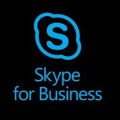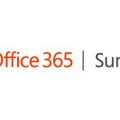Skype for Business Server: System Hardware Requirements
As part of the Office365 Summit series, we’re finding out lots of really useful information about the upcoming Skype for Business release, the replacement to Microsoft Lync.
Courtesy of a webinar on Reference Architecture and Design Considerations, we now know the System and Hardware requirements, and they are mostly the same as Lync Server 2013. That should come as a relief for Lync admins dealing with hardware budgets – props to the S4B Hardware Team for managing to keep them constant!
Hardware
CPU: 64-bit dual processor, hex-core, 2.26 GHz or higher. Intel Itanium processors are not supported for Skype for Business Server server roles.
Memory: 32 GB
Disk: 8 or more 10,000 RPM hard disk drives with at least 72 GB free space. Two of the disks should use RAID 1, and six should use RAID 10. OR: SSDs which provide performance similar to 8 10,000-RPM mechanical disk drives.
Network: 1 dual-port network adapter, 1 Gbps or higher (2 recommended, which requires teaming with a single MAC address and single IP address).
Operating System
Recommended OS: Windows Server 2012 R2.
Windows Server 2008 R2 and 2012 are supported. However, Windows Server 2008 R2 will mean that Windows Fabric v2 is used instead of v3. Latest fixes for Windows Fabric may not be available for older operating systems.
Database
SQL Express 2014 is bundles in the FEs and is handled in the installation scripts.
Back-end supports: SQL 2008 R2, SQL 2012, SQL 2014. Support for SQL Mirroring, SQL Clustering, SQL AlwaysOn Availability Groups.
(SQL AlwaysOn Availability groups is recommended. Although database mirroring is still available, it is now considered a depreciated feature and will be removed in a future release of SQL Server).
Also includes synchronous writes to back-end for critical data replication.
Other
Remote Tenant PowerShell is now included on the DVD and is no longer a separate download.









